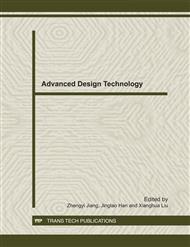[1]
Chinnusamy, V., Zhu, J., Zhu, J.K., 2006. Salt stress signaling and mechanisms of plant salt tolerance. Genet. Eng. 27, 141–147.
DOI: 10.1007/0-387-25856-6_9
Google Scholar
[2]
Cho, H.J., Kang, J.H., Kwak, J.Y., Lee, T.S., Lee, I.S., Park, N.G., Nakajima, H.,Magae, J., Chang, Y.C., 2007. Ascofuranone suppresses PMA-mediated matrix metalloproteinase-9 gene activation through the Ras/Raf/MEK/ERK- and Ap1-dependent mechanisms. Carcinogenesis 28, 1104–1110.
DOI: 10.1093/carcin/bgl217
Google Scholar
[3]
Chung, Y.C., Chun, H.K., Yang, J.Y., Kim, J.Y., Han, E.H., Kho, Y.H., Jeong, H.G., 2005. Tungtungmadic acid, a novel antioxidant, from Salicornia herbacea, Arch. Pharm.Res. 28, 1122–1126.
DOI: 10.1007/bf02972972
Google Scholar
[4]
Cohen, M., Meisser, A., Haenggeli, L., Bischof, P., 2006. Involvement of MAPK pathwayin TNF-alpha-inducedMMP-9expression inhumantrophoblastic cells. Mol.Hum. Reprod. 12, 225–232.
DOI: 10.1093/molehr/gal023
Google Scholar
[5]
Han, S.K., Kim, S.M., Pyo, B.S., 2003. Antioxidative effect of glasswort (Salicornia herbacea L.) on the lipid oxidation of pork. Kor. J. Food Sci. Anim. Resour. 23,46–49.
Google Scholar
[6]
Chung, Y. C., Chun, H. K., Yang, J. Y., Kim, J. Y., Han, E. H., Kho, Y. H., et al. (2005). Tungtungmadic acid, a novel antioxidant, from Salicornia herbacea. Archives of Pharmacal Research, 28(10), 1122–1126.
DOI: 10.1007/bf02972972
Google Scholar
[7]
Zhu X, Zhang H, Lo R, 2004. Phenolic compounds from the leaf extract of artichoke (Cynara scolym us L.) and their antimicrobial activities [J]. J Agric Food Chem , 52 ( 24):7272~7278.
DOI: 10.1021/jf0490192
Google Scholar
[8]
Zhao XH ,He XW ,Luo ZG ,et a1, 2007.Study on the ethanol extraction conditions and antioxi Idation propety of flavonoids from leaves of Diosppyros kaki. Food Res Dev , 28(3):49~53.
Google Scholar
[9]
JIANG Li, JIANG Li-kc ,CHEN Ke-wen, 2009.Ultrasonic Extraction Conditions of Bamboo Shell Flavones and Its Antioxidative Activity on Oil[J]. Natural Product Research and Development, 21: 146-151.
Google Scholar
[10]
Yang Congjur,Niu Xingwei,Wu Jinshu, 2007. Preliminary determination on pesticide bio-activities of reed stems and leaves[J]. Anhui Agri.Sci.Bull. 13(14): 166~167.
Google Scholar
[11]
MENG Yu-lan, 2005. Reed Health care products[J]. Technology and Market, No.5, 20.
Google Scholar
[12]
XU Han-hong,ZHANG Zhi-xiang,ZHA You-gui, 2003. The Prospect of Botanical Pesticides in China[J]. Pesticides; Vol.42, No.3, 1~10.
Google Scholar
[13]
FEG Jun-tao, SHI Yong-qiang, ZHANG Xing, 2001. Screening studies on fungistasis of 56 plant extracts[J]. Jour.of Northwest Sci-Tech Univ. of Agri. and For.(Nat. Sci. Ed.), Vo1. 29, No. 2, 65~68.
Google Scholar
[14]
PFNG Yue-feng, LU Hong-xue,ZH0U Yong, 2006. Bioactivity of the Extracts from Stem of Mirabilis jalapa L. [J]. Guizhou Agricultural Sciences,Vo1.34, No. 6, 22~24.
Google Scholar
[15]
Guo Liping, 2008. Study on antioxidation of banana peel extracting components on oils[J]. Cereal & Food Industry, Vol.15, No.3, 18~20.
Google Scholar


